Did you know that QR Codes were originally designed to replace traditional barcodes for inventory management?
Fast forward to today, and they’ve evolved into a versatile tool used across industries—from retail and finance to marketing and sustainability. QR Codes are everywhere, and for good reason.
They’re fast, secure, and incredibly efficient.
In this article, we’ll explore seven major advantages of QR Codes and how they can transform the way you engage with your audience, streamline operations, and even contribute to environmental sustainability.
Let’s look at some benefits of using QR Codes on print media that allow consumers to engage in a way that is:
1. Quick and error-free
If not QR Codes, the only way to connect consumers to online content is by using a URL. However, typing a URL is time-consuming and inconvenient on a mobile screen.
Consumers are very likely to make errors while typing. Compared to this, scanning a QR Code is a much faster and error-free process.
With QR Codes, users simply need to take a quick scan to take the desired action. No need for them to manually put in any effort. This also minimizes the errors that could occur with, say, typing a URL or entering payment details at a supermarket.
In addition to this, QR Codes are also damage-resistant. Let us explain how.
Imagine you have a slightly damaged QR Code where a part of the code is smudged or erased. Will that make your QR Code un-scannable? No!
QR Codes have a built-in ability to fix these smudges or mistakes.
The information in a QR Code is split into parts, like pieces of a puzzle. For each part, the QR Code adds some extra information like having extra clues for each puzzle piece.
Thanks to these extra clues, if a part of the QR Code gets damaged or covered up, it can still figure out what was there.
So when you scan a QR Code, the device reads the extra clues and can fix small mistakes or missing parts.
Hence, QR Codes stay perfectly scannable even after being damaged by up to 30%. This makes them especially suited for harsh or rough situations.
2. More secure
In 2015, Chicago-based Wintrust Financial and technology provider FIS launched about 200 ATMs. These ATMs have QR Code-based cardless transaction capabilities.
Customers can withdraw money simply by scanning a QR Code at the ATM screen using their Wintrust app.
According to Wintrust and FIS, QR Code-based cardless cash withdrawal takes only 8 seconds compared to 47 seconds for a normal withdrawal.This shows that QR Codes are a faster and more convenient mode of transaction for the users. This is one of the key reasons why QR Codes are so popular in China.
3. More informative
Unlike online marketing, print-based marketing has limitations. Particularly in real estate space. There is only so much you can do in a newspaper ad, product packaging, and brochure right? Wrong.
With QR Codes, you can give consumers a way to access unlimited information.
In 2015, Nestle’s popular product in India – Maggi noodles – got banned. It was due to claims by authorities that it contained impermissible levels of lead.
The ban was soon lifted but Nestle knew that people now had trust issues. To regain their trust, Nestle took various steps to prove its compliance with people’s health and law. To do it, they shared a detailed list of ingredients and other important information with customers. This could be on safety, environment, society, and recipes.
Obviously, it could not print all of this on the packaging. So the company added a QR Code which led buyers to the mobile site that had all this information.
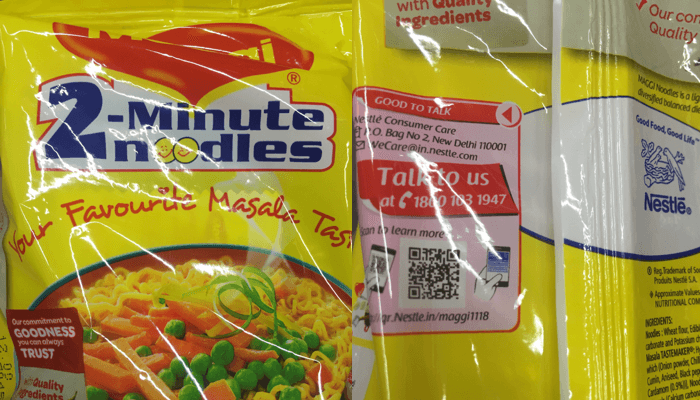
4. Engaging with rich content
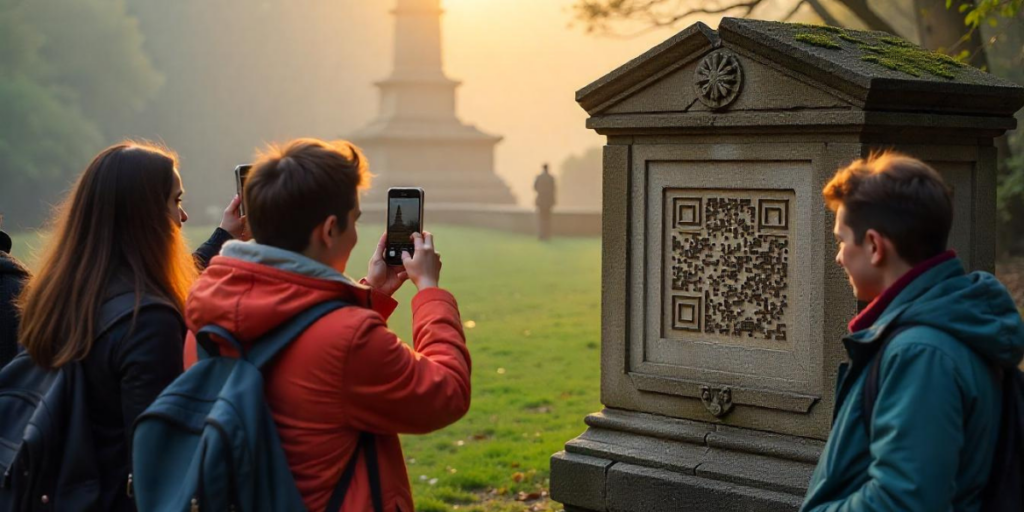
Words are good. A picture is worth a thousand words.
But a video has thousands of pictures. Audio is also more convenient. But unfortunately, you can share these forms of rich content via print promotions—unless you add a QR Code.
Using QR Codes, marketers can share rich content via their print promotions. Thus, they will see better engagement from their audience. For example, packaged food company Chef’s Basket added a QR Code on the packaging of one of its pasta products. When scanned, the QR Code redirects the consumers to a video of the recipe of the pasta dish.
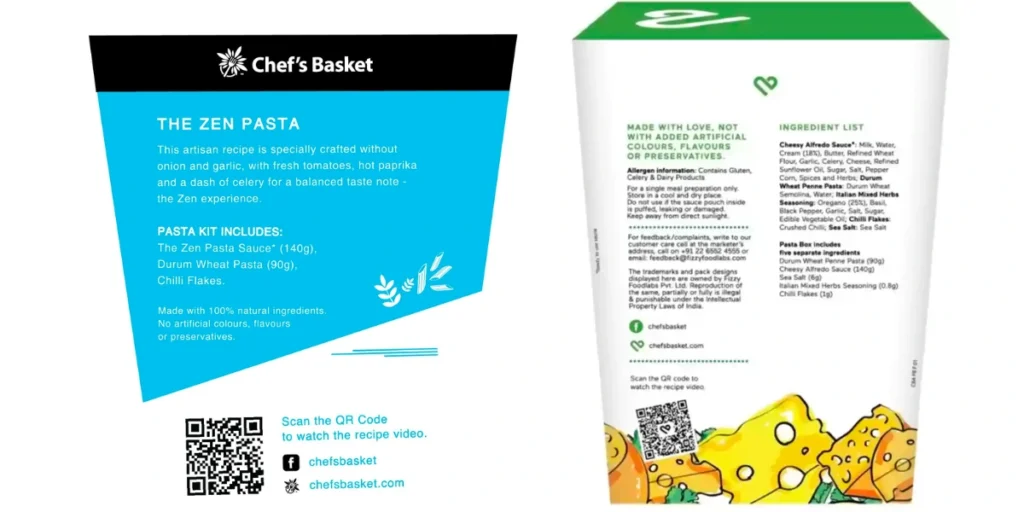
5. Actionable
While print media still works well for branding, it is not interactive like outdoor or digital marketing. But with QR Codes, it can be.
By adding a QR Code, you can make your promotions interactive and take inputs from your target audience. You can run a contest, get people to register for a product or event, take feedback, or allow your customers to make purchases right from the newspaper ad or flyer.
A good example is ‘World Park’, a QR Code based campaign that was run in New York City’s Central Park in 2010. QR Codes on boards were placed in different locations in the park. When scanned, the QR Codes engaged visitors in a Quiz on the park’s history, pop culture, art and music, and science and geology.
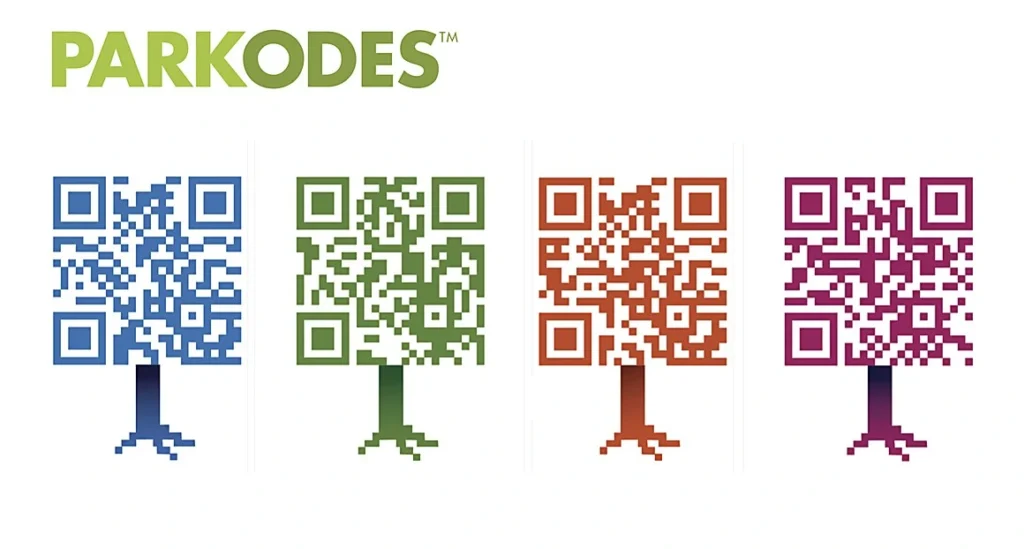
6. Trackable
If you are a marketer, then you know the importance of analytics. It helps you gain valuable insights into your audience. Thus, helping you identify areas of strength and weakness.
But print media, on its own, has no tracking abilities, unlike digital media. This is where QR Codes help you out. QR Codes help you gauge the impact of print media marketing efforts by letting you track their scanning activity. For example, how many people have scanned it, when did they scan it, and where did they scan it?
In addition to this, it also offers a feature called event tracking. It tells you how people interact with the content encoded in the QR Code after scanning it. For example, it could be clicking on a button that says ‘Sign-up’ or ‘Register Now’.
With this data, you can optimize your future campaigns better.
7. Easy to save
Another advantage of QR Codes is that the user can easily save the data on their smartphones.
For example, if you scan a Dynamic Vcard QR Code, a mobile page with your contact details will open. The page features an ‘Add to Contacts’ button allowing the user to save the contact directly on their smartphone.
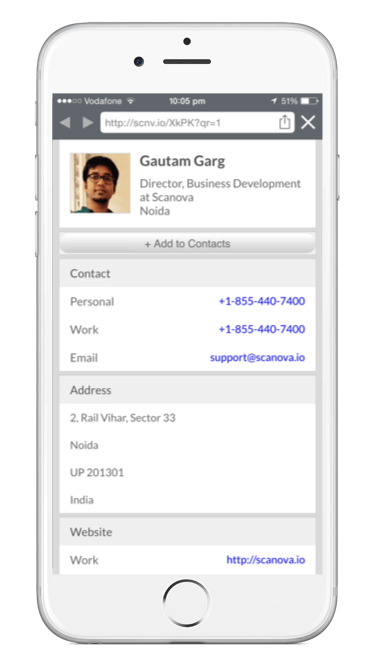
See how to make your business card dynamic and exciting.
You can easily convert your barcode into QR Codes. Using a QR Code on a print advertisement gives it a new life, especially when you design the creative in a reliable poster maker that supports high-resolution exports.. Marketers can engage their customers in engaging ways while making the entire process faster and more convenient.
Many Fortune 500 companies, such as Nike, Google, and Amazon, have also jumped on the QR trend to drive engagement. Source: websiteplanet
How to create QR Codes
Now you know what benefits a QR Code can offer you. Let’s see, how to create one!
1. Go to Scanova.
2. Choose the type of QR Code you want on the page that loads. Choosing the type of QR Code would depend on what you would like your QR Code to link.
Do you want it to be a URL, image, or interactive video? Scanova leaves it up to you to choose your preferred category by offering many options.
3. Fill in your details. For example, if it were a Website URL QR Code, paste your website and click “Continue.”
4. Then, on the next page, give your QR Code a catchy name or something you can remember it by, and then click “Create QR Code.”
5. You get a preview of your QR Code. Now, this is where magic happens! You can now edit it by choosing “Edit Design.“
6. Click “Edit Design” and let your creativity roam free! You will see all the recommended designs once you click on them. This option lets you change the look of your QR Code.
Let’s check out how to customize your QR Codes according to your use case. Scanova requires you to sign up for a free trial of their paid plans to use customization options. Check out the pricing details here.
I. Add a unique logo for a personal touch
The best way to do this is to include your business or occasion’s logo in the QR Code to reinforce branding.
You can access the “Custom Logo Design” option to upload your logo in PNG, JPG, or JPEG formats.
Do you prefer text? You can create a text-based logo directly.
You can resize your logo, add a stroke for better visibility, or remove data modules for a creative twist.
A branded logo ensures your QR Code connects to your business/aesthetics and builds user trust.
II. Choose colors and patterns that match your theme
Make your QR Code visually appealing by aligning it with your brand’s theme or event colors.
You can use the “Continue Editing” option to adjust the colors of the “Eyes” and data modules.
You can even add gradients for a modern, sleek effect that catches the eye. The “Eyes” tab also allows you to customize patterns, making the QR Code even more attractive.
This feature ensures your QR Code blends seamlessly into your designs, gift cards, or resume.
III. Opt for transparency (optional)
Many users make the QR Code’s background transparent for a clean, seamless look.
The “Make Transparent” option in the Background tab allows your QR Code to blend naturally with flyers, posters, or digital screens.
This approach is ideal for creating a polished and professional design.
IV. Explore different shapes and borders
You can go beyond the standard square QR Code to make it unique. Use the “Suggested” or “All” tabs from the Frames option to select shapes and borders that suit your design.
Rounded corners, creative borders, or custom shapes can add flair to your QR Code and attract more scans.
These features make your QR Code a centerpiece of your promotional materials, ensuring it stands out while aligning with your brand identity.
Once you are done with that, follow the next step to download your high-resolution QR Code:
7. Test your QR Code for perfect scans using various devices and scanners before downloading. You would not like this masterpiece lost in the sea!
8. Click that fabulous “Download” button and your QR Code is ready.
9. When you click download, you then get to choose what format you’d like best suited for your needs, say PNG or JPG
10. Click on “Export.” Your QR Code is now ready for use.
How to use QR Codes for your business promotions
In the rapidly evolving landscape of marketing, businesses are constantly looking for innovative strategies to engage customers and promote their products or services.
Businesses often resort to QR Codes as their go-to marketing tool for audience engagement.
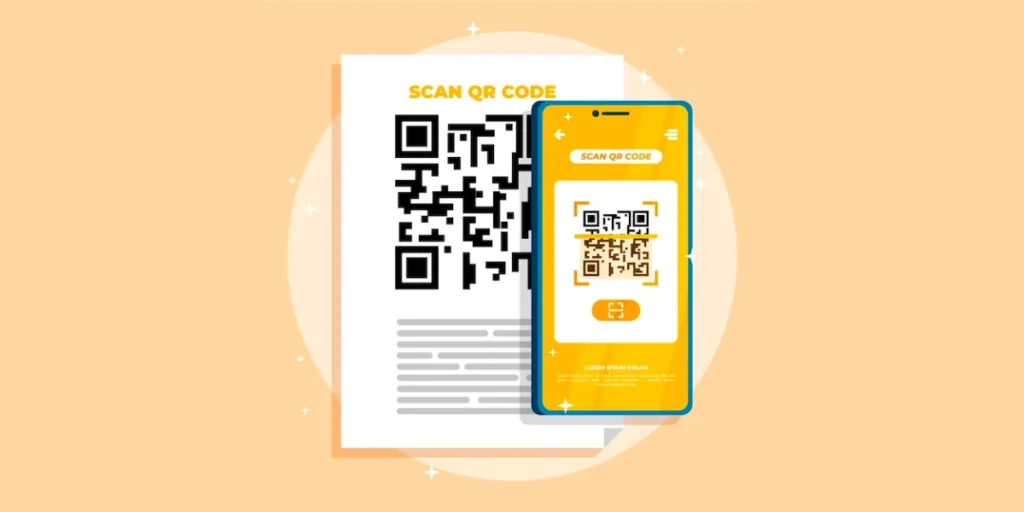
Let’s see some examples of how your business can use QR Codes:
1. Get people to your website
Having a business website is good but having relevant traffic to it is even better. It could be to simply spread awareness about what you do, get people to check your services, or even buy from you.
And QR Codes are very commonly used to get traction to your website via print. Using them, your audience no longer needs to type any link to get to your website.
All they need to do is scam the Website URL QR Code on your promotional creatives. These could be flyers, brochures, business cards, and other printed materials.
This eliminates the manual work and is a more efficient way to direct customers to your website.
You can also generate QR Codes that link directly to your social media profiles. This comes in handy to boost your social media followership.
2. Hassle-free coupon redemption
Special offers and discounts are an excellent approach to attracting new customers and retaining existing ones.
You can create Coupon QR Codes that link to exclusive promotions, discounts, or special offers.
Customers are more likely to avail coupons that are available digitally to them as compared to the physical ones.
This is because the digital ones are easier to store and redeem.
When users scan a Coupon QR Code, it shows them a landing page with the offer details, coupon code, and a button to redeem it.
Hence, no one needs to store the coupon or remember the code anymore. As easy as it sounds!
3. Provide detailed information via print
You can add QR Codes to print advertisements in magazines, newspapers, or posters.
These help provide information and interactive content that you couldn’t add to the print either due to limited printing space or due to technical constraints.
QR Codes here cannot only give textual information but also show videos, images, button links, and a lot more!
4. Market your event
Did you know that event invitations need not stop you from sharing detailed information about that party, conference, or wedding you’re planning?
With the limited printing space, you can’t really add all the details to the card. But an Event QR Code helps you overcome this.
With it, you can share as many event details as you want. in addition, you can also share multimedia such as images, videos, audio, and documents that you couldn’t otherwise add to a card, flyer, or poster.
Also, if you’re hosting events, there’s a tool called Ticket Generator that helps you protect your tickets from tampering by adding a QR Code to them.
It makes sure no unauthorized guests are given entry to your event premises.
5. Make your business cards actionable
You can enhance your business cards by adding a QR Code that helps people add you as a contact with a simple click. No need for them to type your name, number, etc.
It can also redirect people to your LinkedIn profile or portfolios.
You can also encourage customer feedback by linking the QR Codes to surveys or review platforms.
This can help you gather valuable insights for improvement.
Many Fortune 500 companies, such as Nike, Google, and Amazon, have also jumped on the QR trend to drive engagement. Source: websiteplanet
Leveraging QR Codes for effective marketing campaigns
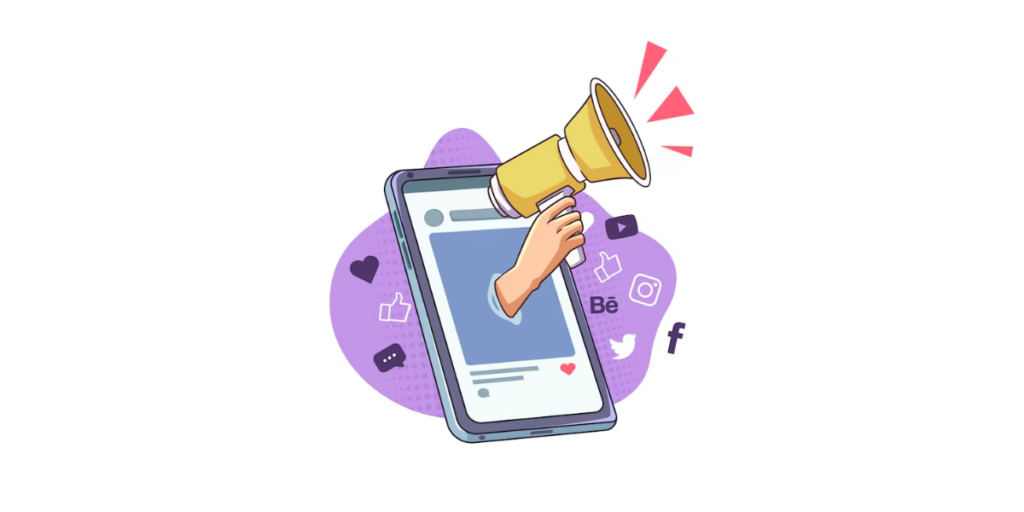
1. Boosts user engagement
Do you often run marketing campaigns? Cool. Then you’d want your target audience to engage with your marketing assets.
And with a simple addition of QR Codes, engagement rates are known to get a jump. So the next time you plan a campaign, make it interactive (and interesting) for the audience to not only look at it but also scan it.
2. Provides instant information access
Now this one is quite obvious. Scanning a QR Code, though takes a blink of an eye, but can easily grant you access to loads of information. It could be details about a product, promotion, information about an event, and more.
3. Tracks easily
QRs can even make your print media campaigns trackable. That’s right. With a QR Code attached to your marketing material, you can track the number of scans, their locations, devices, browsers, and many more interesting details.
4. Offers versatility
With a QR Code, you needn’t worry a lot about the placement. It fits in all spaces big and small. From large posters, wraps, covers, and banners, to small spaces such as containers and packing of the products, and clothing tags, they fit everywhere.
5. Encourages immediate action
The QR Code makes it easy for the audience to take action swiftly and easily. It could be anything such as visiting a website, making a purchase, subscribing to a channel, or participating in a giveaway.
6. Improves brand image
When used for a line of business, proper usage of QR Codes influences how clients perceive a brand, making client segmentation and engagement easy and imaginative.
7. Simplifies data collection
To channel people to certain web pages or an online form in the event you want to capture some information such as e-mails in regards to shoppers’ responses, use the codes.
How QR Codes help in environmental sustainability

Applying QR codes for environmental sustainability is one of the great ideas that can be implemented. Here are a few ideas on how QR codes can contribute to sustainability efforts:
1. Product information and sustainability metrics
Examples of using QR codes include linking to more information about a product, for instance, its life cycle assessment, carbon footprint, and sourcing information. This transparency assists consumers in making adequate decisions.
2. Promoting recycling and proper disposal
QRs on the product packaging can lead the consumers to know how to dispose of the product, this can help in the reduction of wastage and encourage the consumers to recycle.
3. Education and awareness campaigns
It can bring people to the learning resources about the environment, climate change, biodiversity, or correct usage of our natural resources so that, in some way, consumers get more conscious of these issues.
4. Virtual tours and digital engagement
In environmentally sensitive locales such as nature reserves or farms, real life can include motionless touring information such as vouchers carrying QR codes for a range of online tours.
5. Tracking and accountability
The sustainability of a product can be followed through QR codes from the source to the consumer with proof of sustainability standards and certifications.
6. Digital payments and paperless transactions
This is because using QR codes means cashless transactions, meaning that people will not have to make use of receipts and this will help cut several unnecessary papers that will be used.
Best Practices

Apart from advantages, you should also be familiar with the best practices while working with QR Codes:
1. Add an appropriate CTA
CTA translates to ‘Call-to-action’. It is a small instruction that nudges people to take the required action.
It could be anything such as ‘Scan here to view the website”’ or ‘Scan here to view the file’’.
2. Add a design to the QR Code
If you are planning to use QR Codes for print media creatives, you may also design them. That’s because custom QR Codes attract the audience’s attention and in turn, get more scans.
3. Test scan the QR Code
It is always advisable to test scan the QR Code before putting them out for your target audience.
4. Choose optimal printing format
If you are going to use QR Codes for print media creatives or large posters and billboards, it’s recommended to export them in high-resolution formats—SVG, EPS, or PDF. They ensure that the QR Code doesn’t get pixelated no matter how much resizing is done.
That’s it. That’s all you need to know about the advantages of a QR Code.
The QR payment market’s value reached close to $10 billion in 2022. According to market forecasts, this number is expected to hit $33.13 billion by 2030. Source: websiteplanet
FAQs: Advantages of QR Codes

1. What are possible the advantages of QR Codes?
QR codes have built-in error correction, allowing them to remain functional even if slightly damaged or distorted, unlike barcodes.
QR codes can store significantly more data than barcodes, making them more versatile for various applications.
They offer more security and overcome the limitations of print media by providing consumers with unlimited access to information. They enable the inclusion of rich content such as videos or presentations, encouraging audience interaction.
2. What is the main purpose of QR Codes?
Acting as a bridge between offline and online content, facilitating instant access to information.
QR Codes offer a cost-effective setup, requiring minimal or no extra expenses for businesses to implement.
QR Codes are very user-friendly. They require minimal human effort for users to access online resources, users can do so by simply scanning a code.
QR Codes facilitate better user insights, allowing businesses to track customer engagement. You can analyze customer interactions, preferences, and engagement patterns to plan your future strategies.
3. How to use QR Codes for business?
For business use, you can use QR Codes in the following ways:
- Use them in your marketing communications to get better engagement.
- You can also use QRs to receive payments from your customers.
- Inventory management is another popular use case of QR Codes. They can help you track your goods and services.
- Adding them to business cards can help you get the prospects to add you as a contact.
- Use QR Codes for analytics to understand user behavior and optimize future marketing strategies.
- For business events, you can use Event QR Codes to relay detailed event information and get the guests to RSVP.
- Seamlessly share documents with the required stakeholders (and even password-protect them.
4. What are the advantages of QR Codes over barcodes?
QR Codes surpass barcodes by providing built-in error correction, ensuring functionality even with slight damage. They can store more data, offering versatility for various applications.
Scanning QR Codes is quicker and more direct than typing numerical codes associated with barcodes. QR Codes can link to diverse content ranges, providing a richer and more interactive user experience.
5. What are some benefits of QR Codes for customers?
QR Codes benefit customers by saving time through quick and effortless access to information.
They offer convenience in transactions, particularly in scenarios like cardless cash withdrawals.
QR Codes make print media interactive, allowing customers to participate in contests, provide feedback, or make direct purchases.
Users can easily save contact details or other information with a simple QR Code scan.



What’s amazing about QR codes is that they can be added to virtually anything you can imagine, from cereal packets to advertisements on the underground. This level of versatility can prove immensely helpful for advertisers and marketers. Because of this interesting advantages now QR Code generator and readers are available everywhere. I enjoyed your blog. As it contains very nice information & great representation.
Really very helpful article, Thanks for the information.
Hi Robins,
We are glad you liked the article.
Nicely written, Informative
We’re glad you found the article helpful.
Very specific & informative
Thanks
We’re glad you found it helpful.
QR based attended Parking Management allows visitors to get direct entry by showing physical/digital parking stickers.
Can I simply just say what a relief to discover somebody who truly knows what they are discussing online. You actually realize how to bring an issue to light and make it important. A lot more people have to look at this and understand this side of the story. I was surprised that you are not more popular since you definitely possess the gift.